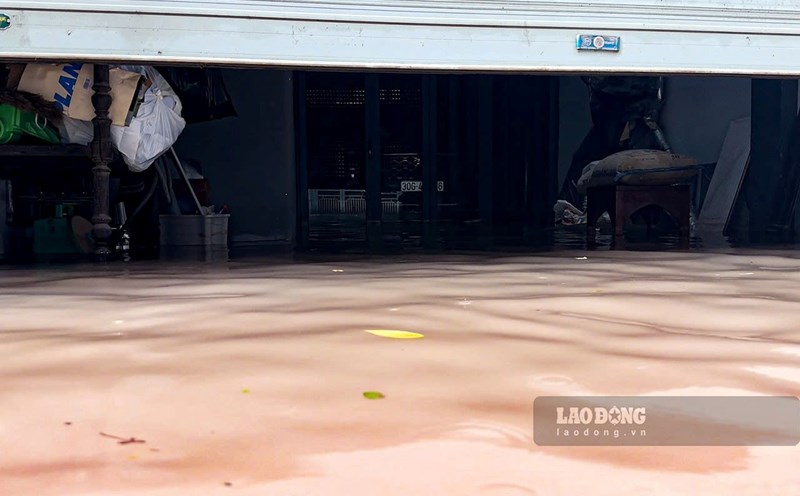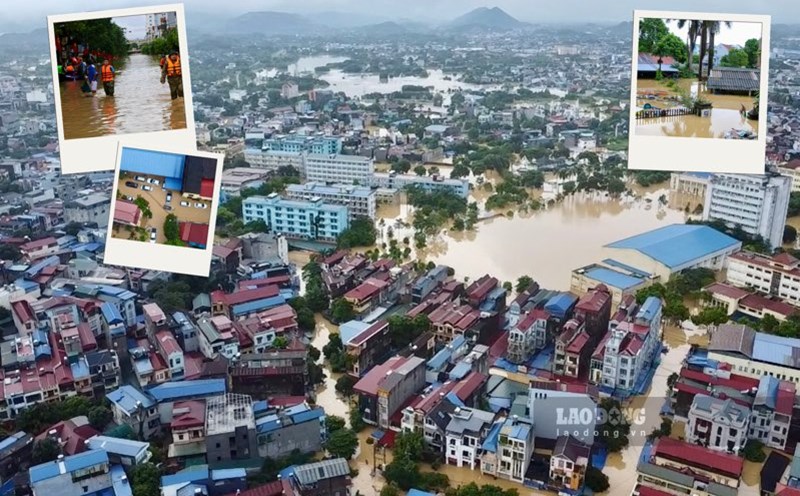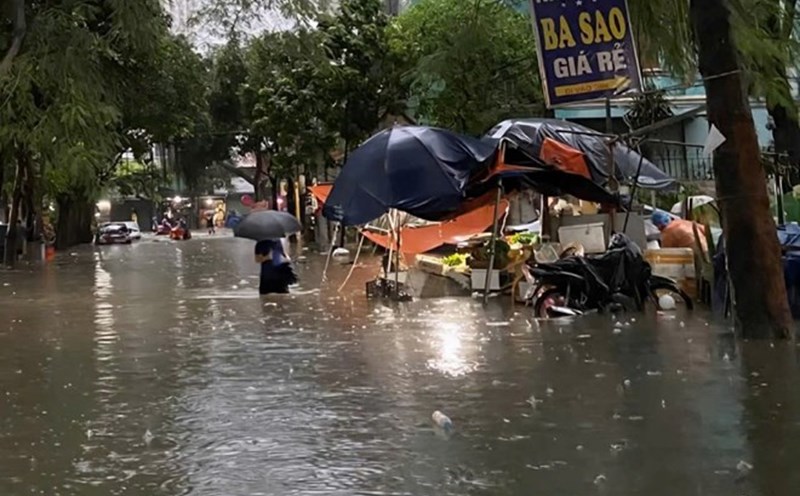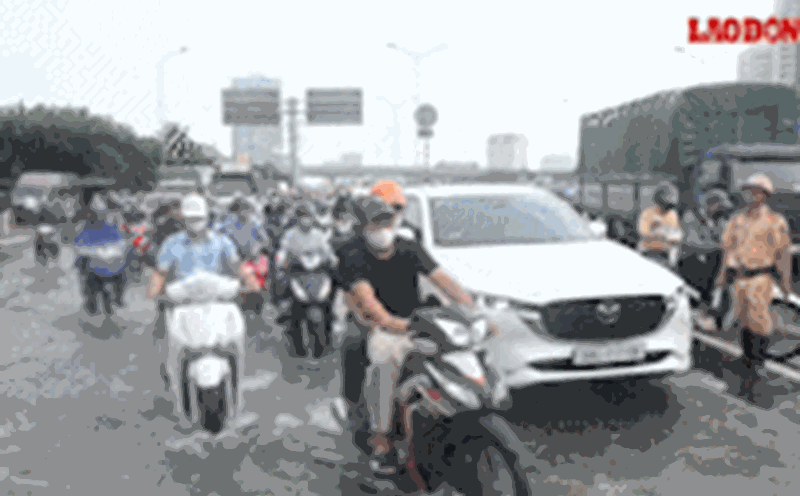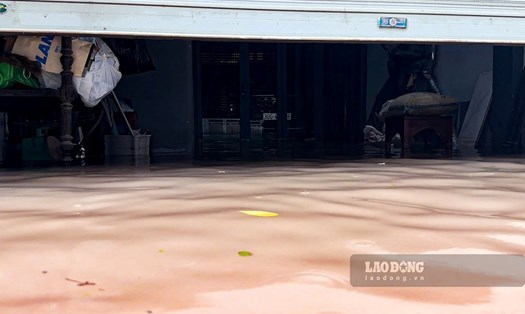Investing heavily in the drainage sector but not effectively
The heavy rain on the morning of October 7 caused many areas and roads in Hanoi to be deeply flooded. All activities and daily activities of the people were disrupted, traffic was paralyzed in front of the immense sea, many schools had to send notices of urgent school closures, some agencies and unions had to cancel event schedules, and a number of workers had to take a day off. This situation makes people question what is the reason for Hanoi being "flooded every time it rains" and what solutions the capital has to avoid repeating the flooding scenario.
Architect Tran Huy Anh - Standing Member of the Vietnam Association of Architects - said that from 2008 to present, Hanoi has spent a lot of money investing in the drainage sector, but the efficiency is not commensurate. He recalled that 17 years ago, the University of Construction held a scientific conference showing that up to 80% of the city's "shallowly flooded" area was filled.
That means that as the urbanization develops, the semi-flooded area - which is the natural water reserve space - will be narrowed. The number of newly arising flooded areas, in my opinion, will increase, the flooding will be longer and deeper, because we no longer have space to store rainwater when the rainfall exceeds the design capacity, analyzed Architect Tran Huy Anh.
Prof. Dr. Nguyen Viet Anh - Vice President of the Vietnam Drainage Association also commented that the recent rains have all had very high intensity, were extreme, far beyond the design capabilities of the current drainage system. Meanwhile, Hanoi's area is now more than 3,000km2, 10 times larger than before, but the drainage infrastructure system has not been expanded and upgraded accordingly. It is clear that the city has not yet adapted to extreme rains like this, said Mr. Viet Anh.
According to Prof. Dr. Nguyen Viet Anh, the dense development of new urban areas has caused the natural surface to be concreted, causing rainwater to quickly deposit in the sewer system. "When the drainage is not large enough to drain all the water, flooding is inevitable. Previously, behind residential areas were often fields with the ability to drain water naturally. Now, all around are high-rise buildings and concrete roads, and the people there have suddenly become the "flood center". In particular, areas such as Phu Do and Tay Mo are typical examples, Mr. Viet Anh stated.
Prof. Dr. Nguyen Viet Anh also explained the technical principles of urban drainage, when concreting to replace water surfaces and fields, rainwater quickly gathers in the sewers. A rain is always in the form of a curve - when the rain gradually increases, the water flow increases, reaches the peak and then gradually decreases. The important thing is to handle the peak of the rain.
"If all the water was poured into the sewers right away, no matter how large the drainage is, it would be unable to hold them. Therefore, it is necessary to slow down the flow by temporarily holding water in lakes and reservoirs. At that time, even if the sewers are small, the system can still meet the requirements," said Professor Nguyen Viet Anh.
He also emphasized: The principle of rainwater drainage is to slow down the flow before it enters the sewers. If they cannot do that, no matter how much money is spent, Hanoi will still be flooded. Not to mention, the connection between the drainage system in new urban areas and the external network is still very weak, limiting the efficiency of the entire system".
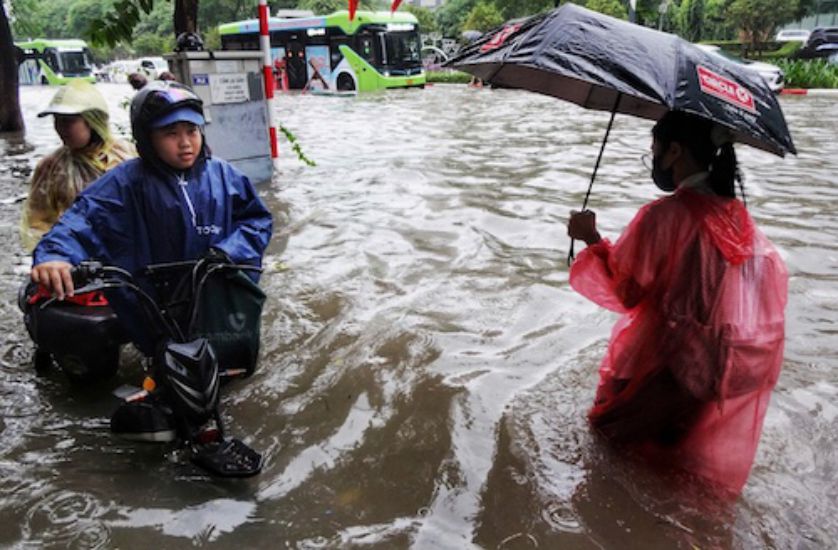
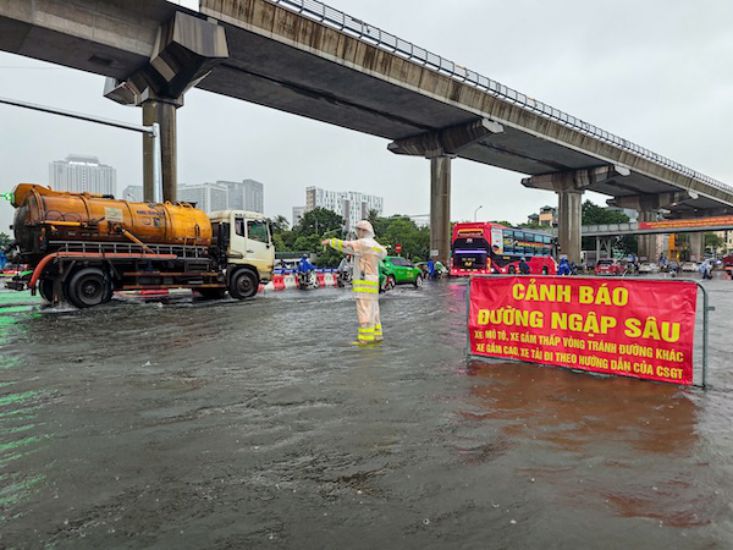

Separate the rainwater system from the wastewater system
According to Prof. Dr. Nguyen Viet Anh, Hanoi can learn from Taiwan (China)'s experience in managing urban drainage.
"In Taiwan, when building new projects, investors are required to arrange underground water tanks to store rainwater. We are proposing similar regulations: Constructions with a roof area of 1,000m2 or more must have rainwater tanks, and these tanks must be directly connected to urban drainage systems, similar to the operating principle of regulating lakes with pumping stations, must lower water levels before heavy rain to create water storage capacity," said Mr. Viet Anh.
Speaking to Lao Dong, Associate Professor, Dr. Vu Thanh Ca - Senior Lecturer at Hanoi University of Natural Resources and Environment - said that many new urban areas do not have an effective drainage system, so every time it rains, it floods. Although flood prevention projects have been invested in, implementation is very slow, limiting the regulating and drainage effects. Meanwhile, only a small part of Hanoi's area currently has a separate rainwater drainage system with a wastewater system, causing great difficulties in cleaning rivers and lakes.
According to Associate Professor, Dr. Vu Thanh Ca, the urgent urgent thing is to speed up the progress of local flood prevention works according to the plan. Climate change is causing extreme rains with stronger intensity, shorter duration and heavier flooding, while investing in upgrading the flood prevention system requires large capital and a long time.
Mr. Ca cited: "The proposals for building underground regulating lakes are reasonable but require huge costs, which are difficult to meet in current conditions. Moreover, it is uncertain whether this model can be effective in the future, when climate change causes heavy rain to increase in frequency and intensity.
Therefore, according to him, Hanoi needs to combine hard solutions, that is, gradually perfecting, upgrading the drainage system and regulating flood control - with a soft solution, lower cost but bringing clear damage reduction results.
One of the soft solutions he proposed is to build and operate a local flood warning system, capable of supporting the government in making flexible decisions during heavy rains. "Currently, the rain forecasting work is highly accurate. If combined with a flood warning system, we can calculate and forecast flooded areas, thereby proactively letting students stay home from school, study online, or allowing agencies and businesses to work remotely to reduce damage caused by flooding. With current technological capacity, this system can be completely built and put into operation soon," said Mr. Ca.
In addition, this expert also emphasized the need to increase the construction of open-air regulating lakes, green parks, and the use of water-absorbing materials for sidewalks. These solutions both help increase the ability to absorb and retain rainwater, create a landscape and improve the urban environment.
Associate Professor, Dr. Vu Thanh Ca proposed that Hanoi soon issue regulations requiring the separation of rainwater drainage systems from wastewater drainage systems, and at the same time require all new urban works and areas to strictly comply with this regulation, in order to contribute to cleaning rivers and lakes and improving the quality of the urban environment in the long term.

